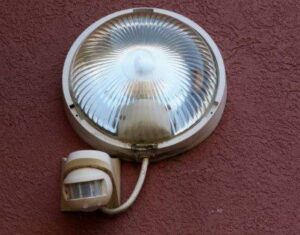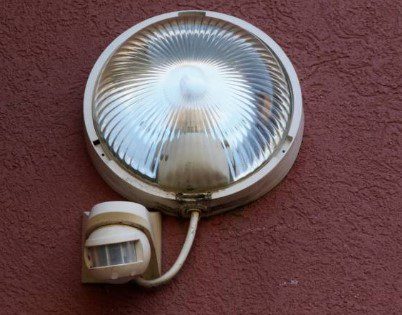When you want to install LED outdoor lights around the exterior of your home, you don’t want them to be too dim or too bright. Extra bright lights tend to take more power, which can mean a jump in your utility bills. Plus, they can make your home feel more like a commercial parking lot than a soothing retreat.
However, lights that are too dim may cause safety issues. So we get it, brightness matters. But what are you supposed to do? We’ve helped thousands of customers revamp their exteriors with the perfect lighting setup. We’re here to cover everything you, as a homeowner, need to know about lumens for outdoor lights to help you choose the right ones for your marvelous outdoors. Let’s get to it!
Importance of Choosing the Right Lumens
Before LED lights became popular, we measured the brightness of a light bulb in watts. The more watts, the brighter a bulb was. Then, energy-saving lighting, LED, emerged. An LED light of a lower watt is still brighter than an incandescent light bulb four times its wattage! LED’s luminous efficiency came about, and with it, lumens as a standard measurement of brightness.
Your outdoor lights should be bright enough, but not too bright. A well-lit outdoor minimizes the chances of accidents by illuminating your path and stairs. A bright outdoor environment can provide a safe and efficient environment that allows your family to hang out and enjoy dinner outside while the moon shines over their heads.
How Many Lumens are Needed for Outdoor Lighting Fixtures?
Factors like your preferences, the position of the lights, and the area you intend to light determine how many lumens you’ll need. However, here are some general standards, based on where or how you’ll be lighting your yard:
Outdoor Path Lighting
Path lighting is used to illuminate your way around your outdoors and is also decorative. These lights are crucial because they impact how safely people will be able to move about your outdoor space in the dark. Lighting between 100 to 200 lumens would be best for your outdoor path.
Step Lighting
Step lights illuminate the way as you walk upor down stairs. You don’t want to blind people as they walk the stairs, yet you also don’t want shadows that could cause a dangerous misstep.
Therefore, you need to use LED lights, turned towards every step, of around 100 lumens.
Hardscape Lighting
Hardscape lights are usually fixtures attached on walls, especially on the deck and walls. For a smaller deck, 100 to 200 lumens are recommended. However, 300 to 400 lumens would be okay with a larger deck. Wall lighting fixtures should be around 50 lumens.
Pool/Pond Lighting
For that great glow from beneath the water that makes you want to jump into the pool or incredible lighting on the edge of the pond that makes the space look magical, you should settle for 200 to 400 lumens.
Floodlights and Security Lighting
Floodlights and security lights should be the brightest. You want them to flood your whole compound and help you see what’s happening. These lights are every burglar’s worst nightmare. Raccoons don’t get it easy too. These lights should be about 700 lumens.
Garden and Tree Lighting
Every garden’s size is different, and the height of the plants also matters. A small garden can work with 400 to 600 lumens. A larger one from 800 to 1200 lumens. For the trees, any lighting between 100 to 200 lumens is okay.
How to Avoid Light Pollution
You cannot avoid light pollution, but you can reduce it. Artificial lighting causes problems known as light pollution. It interferes with the beauty of the environment. It makes it impossible for one to see stars in the night sky. How can you control it?
1. Turn Off Unused Lights
Growing up, our parents scolded us for leaving our rooms with the lights on. Now we understand what it was all about. Turning off lights you’re not using reduces energy costs and lessens light pollution. Make it a habit.
2. Use LED Lighting
LEDs and CFLs help reduce energy use and also protect the environment. These lights give reduced luminance while enhancing visibility. IDA recommends only warm light sources for outdoor lighting.
3. Only Buy IDA Approved Light Fixtures
The International Dark Sky Association has a list of certified light fixtures that meet their guidelines. Certified lights have minimal glare and trespass and don’t pollute the night sky. Look for the IDA symbol on the light fixture before buying it.

Consider lumens for outdoor light when adding a floodlight with a motion sensor.
4. Install Time and Motion Sensors
Motion sensors are best for your floodlights and security lights. Being the brightest, they should only turn on when needed to reduce energy consumption and avoid bothering the comfort of your neighbors.
FAQs – Lumens Outdoor Lighting
What is the best rating for outdoor lighting?
You should look for products with an IP45 rating or higher. IP65 is the highest rating with outside elements’ level of protection.
What is the difference between 800 and 1,100 lumens?
There’s virtually no difference in brightness if you switch them on simultaneously. But if you switch them alternately, the 1,100 lumens light will shine brighter.
Are 10,000 lumens very bright?
A 10,000-lumen headlight can cover shine over 1600 feet away. That’s how bright it can be.
Make Sure Your Patio is Bright Enough!
Your patio comfort is critical. It should be bright enough, but not too bright. At NightVision Outdoor Lighting, we aim to improve your outdoor living even after the sun goes down. We know the proper lighting for your patio. Contact us, and let us help illuminate your yard.



